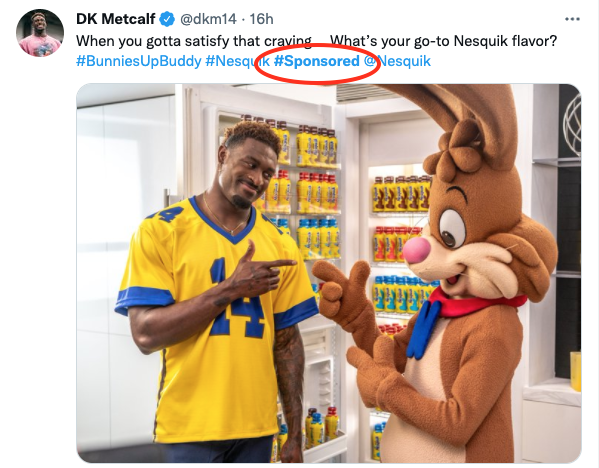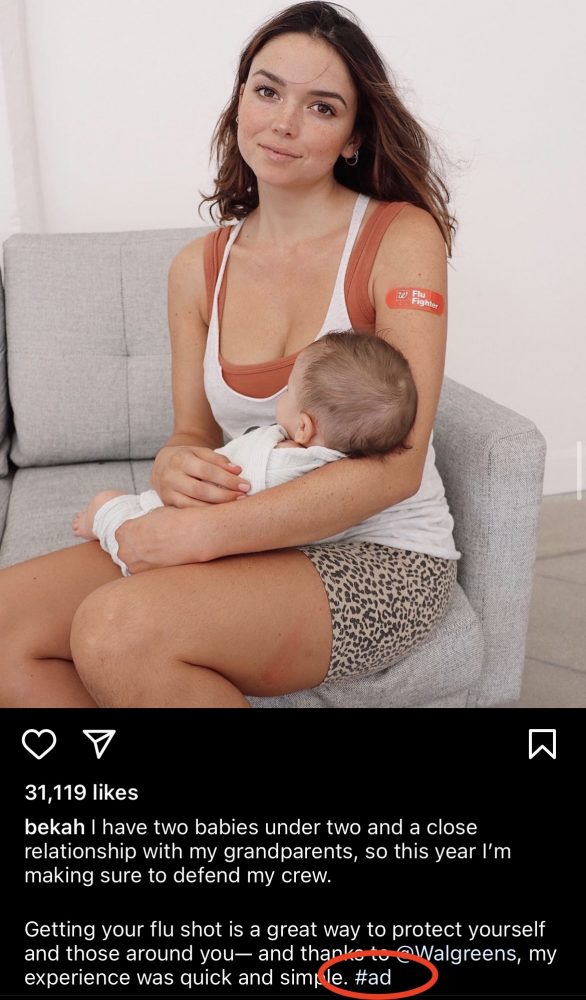As a relatively new type of content marketing strategy, influencer marketing doesn’t seem to be falling out of popularity anytime soon.
Here, you’ll find:
- What influencer marketing is
- Types of influencers to consider
- What campaign metrics to use
- Tips to ensure the partnership is successful
Influencer marketing was a 9.7 billion-dollar business in 2020. By 2022, it had grown to a stunning $16.4 billion valuation.
If your business doesn’t have an influencer marketing strategy yet, you’re not alone. Almost 20% of marketers say they’ll invest in influencer marketing for the first time in 2023.
Of all the new marketing trends we’ve seen emerge over the last decade or so, influencer marketing appears to be one of the most successful. This avenue of increasing brand awareness and boosting organic traffic only seems to be expanding.
Want to get in on this paid social avenue? Keep reading.

Once you’ve nailed down your plan, you can begin seeking out influencers that would make sense to collaborate with. (Image: Unsplash)
What is influencer marketing?
Social media marketing has tons of different facets and avenues, but one of the most interesting developments over the last few years has been the world of influencer marketing.
Influencer marketing is when a company partners with a person or group that is influential — often within a certain industry — to endorse, advocate, or otherwise spread the word about their brand.
Influencers work with complementary brands to bring new products and services to their audiences. Often, influencers are either offered a free product or financial compensation in exchange for their endorsement.
Types of influencers
“Influencer” isn’t a one-size-fits-all title. Under this umbrella, there are a variety of influencer types broken down by their social media following. These include:
- Nano-influencer (500-10,000 followers)
- Micro-influencer (10,000-50,000 followers)
- Macro-influencer (500,000-1 million followers)
- Celebrity influencers (high-profile famous people with millions of followers and known across various industries)
- Industry influencer (prominent in a certain field or topic, such as marketing or vegan cooking)
- Blogger influencer (creates sponsored blog posts)
- Social media influencer (has a popular Instagram, Twitter, YouTube page, etc.)
Unsurprisingly, there are pros and cons to each influencer type. For example, those with smaller followings may not have the reach of an A-lister, but those who do follow are often more engaged and interactive with their content.
On the other hand, influencers with large followings are sure to garner some serious traction on your campaign, but you’ll likely be paying a premium price for those eyeballs. (OK, that sounds weird, but you get it.)
Why invest in influencer marketing?
Influencer marketing campaigns can come with tons of benefits, regardless of what field you’re in or who your target audience is.
With the right influencers and some strategic planning, you can increase brand awareness and start to build your own community.
Build your audience
Influencer partnerships can help you access sections of your target audience that you may not have previously reached. When you work with an influencer, you automatically get to capture their audience without having to directly reach out to any leads. You get the benefit of an already engaged audience without the legwork.
Think that social influencers don’t really impact their audiences’ purchasing decisions? Think again. Half of millennials trust product recommendations from influencers, and one third of Gen Zers have bought a product based on an influencer’s recommendations in the past three months.
Reach any demographic
Regardless of what demographic you’re trying to reach, you can find an influencer to connect you with new leads. Influencers exist on virtually all social media platforms and cover countless industries, including travel, apparel, food and beverage, e-commerce, and more.
Improve SEO performance
Being featured in influencer posts is also a great way to boost your search engine optimization (SEO) performance. Influencers linking to your website or social profiles will help to increase the number of backlinks leading to your business. This improves your company’s reputation and allows search engines to more accurately place your website in search results.
6 tips to leverage influencer marketing
Big and small businesses alike can benefit from adding influencers to their marketing plan. If you’re looking to approach an influencer for the first time, here’s a quick guide to planning, launching, and reviewing a campaign.
1. Map out your plan and goals
It’s exciting to jump into a new partnership like this. But before getting ahead of yourself, make sure you’ve taken the time to codify your plan and determine your goals.
You can start by asking questions like:
- What are we hoping to achieve — more followers? Higher engagement rate? Do we want to increase traffic to a landing page? Increase sales for a specific product or service?
- What metrics or key performance indicators (KPIs) will qualify as a successful campaign?
- What do we expect from our chosen influencer?
- Are our expectations realistic for our marketing budget?
- How long will the campaign run?
- How will we analyze the campaign once it’s over?
Creating a plan, much like you would with any other campaign, can keep you organized and on track, while also helping manage expectations when meeting with potential influencers.
2. Find key influencers in your industry
Once you’ve nailed down your plan, you can begin seeking out influencers that would make sense to collaborate with. But what makes a successful influencer for your needs?
Ideally, you want to pair with someone who:
- Has an overall voice or mission that you can get behind
- Has enough followers to help you meet your goals
- Can work with your budget
- Has followers that more or less align with your target audience
- Is reliable when it comes to completing the campaign ask and delivering metrics if needed
To find potential influencers to work with, you have a few options. Of course, you can start by searching various social media platforms using hashtags and searching popular industry terms to see what profiles show up. This is a good approach if you already know what social media platform your audience is most active on.
Pro tip: If you don’t know which platform to start with, consider Instagram. Instagram influencers account for nearly 70% of all influencer campaigns across the most popular social platforms.
From there, it’s common to start with a quick search engine query and see which influencers, if any, show up for industry keywords and popular topics. These could be bloggers who also have a strong social media presence, for example.
You can also leverage special influencer marketing platforms with features designed to help companies find influencers. Some of these platforms include CreatorIQ, Captiv8, Grin, Creator.co, and Upfluence.
Lastly, you can seek out agencies that specifically work with influencers. This option could save you time and resources versus traditional outreach methods, though these influencers often have a higher price tag (since the influencer marketing agency will usually take a cut).

Image: Instagram
3. Brainstorm the content you’re looking for
After determining the best influencer type for your business, it’s time to focus on the content.
Influencer content can be any number of things, including (but not limited to) a:
- Social media photo post
- Status post on LinkedIn or Facebook
- Blog post
- Video
- TikTok
- Tweet
- Story or Reel on Instagram
- Podcast episode
When brainstorming about the kind of content you’re looking for, remember that each type will have different metrics. For example, a Story is temporary content, so it will only have 24 hours to garner impressions. Obviously, you ideally want the post to be on whichever platform the person has the most followers on.

Image: Twitter
Influencers are content creators first and foremost, and they know what resonates best with their individual audiences. Be clear in your expectations, but you should also be willing to step back a bit and trust in your chosen influencer’s content creation expertise.
4. Align on expectations
This is arguably the most important aspect of your partnership. It’s key to be direct and clear about the terms, payment, parameters, and timeline of this influencer campaign.
Have answers to questions such as:
- Will you provide messaging or will the influencer be responsible for it?
- If it’s the influencer’s responsibility, does he or she need to send you their copy? What’s the deadline?
- Do you have minimum metrics you’re looking for when it comes to likes, engagement, etc.?
- What qualifies as success in terms of this campaign?
- How long do you expect the campaign to last?
- Do you expect the influencer to promote the campaign other than through the agreed-upon content?
- Will your company offer a discount code or other incentive to customers who purchase through the influencer’s link or recommendation?
- Do you expect the influencer to sign a non-disclosure agreement or a non-compete clause?
- How soon after the campaign ends should the influencer expect payment, and in what form will it be delivered?
- How soon after the campaign ends is the influencer expected to deliver post metrics?
If you’re working with an experienced influencer, they may already have many of these details outlined as part of their agreement before you all confirm the partnership. If not, it’s wise to flesh out these answers ahead of time so everyone is on the same page.
Many businesses find it helpful to create an influencer proposal template to be revamped and reused with each new partnership. Your template can include elements like a company overview, campaign goal and messaging, deadlines, and payment information.
5. Ensure your brand’s Instagram profile is optimized
When you create a stellar paid ad that leads to a poorly executed landing page? Congratulations, you played yourself.
Don’t let a similar thing happen during your influencer campaign. The last thing you want to do is have new audiences discover your brand, click over to your social media profile, and be met with an experience that doesn’t correctly reflect what you offer.
Before your partnership launches, make sure all of your social media pages are up to snuff. That means fully filled-out profile bios, a consistent profile photo (like your company logo), up-to-date and accurate company info such as the link to your website, and at least a handful of posts that show your pages are active.
Pro tip: If possible, your social media profiles should always link back to a page on your website where people can go for more information or to connect with you further.

Image: Instagram
6. Review campaign performance
Once you’ve paid or reimbursed your influencer, it’s time to review campaign performance.
As mentioned above, hopefully, you and your influencer are in sync about when they’ll deliver the campaign metrics to you. That’s because, in the case of something like an Instagram post, the user posting may be the only one with access to the post’s data.
Check out the results and see how they measure up to your goals. You can analyze details like:
- How much your follower count grew from before the campaign to the end
- The impressions and interactions the content received
- The number of demo or consultation requests resulted, if applicable
- How much website traffic came from the content
- The number of clicks and conversions that resulted
- Overall return on investment (ROI)
Once you’ve crunched the numbers, you can decide whether or not this type of partnership makes sense for your brand. If so, this data can help you optimize and tweak your future influencer campaigns.
Pro tip: Anticipate an influx of DMs coming to your Instagram page as a campaign result? Consider using an automated tool that works like a chat bot to gather info and send FAQ-type responses to direct people to the proper channels.
The takeaway
If you spend any time on social media, you’ve likely come across your fair share of influencer marketing. Influencing is an effective tactic because people often trust the influencers they choose to follow.
Once you know what to expect and how to best plan for working with an influencer, the better your outcome will be — and the higher ROI you can expect.
This article has been updated and was first published in December 2021.

